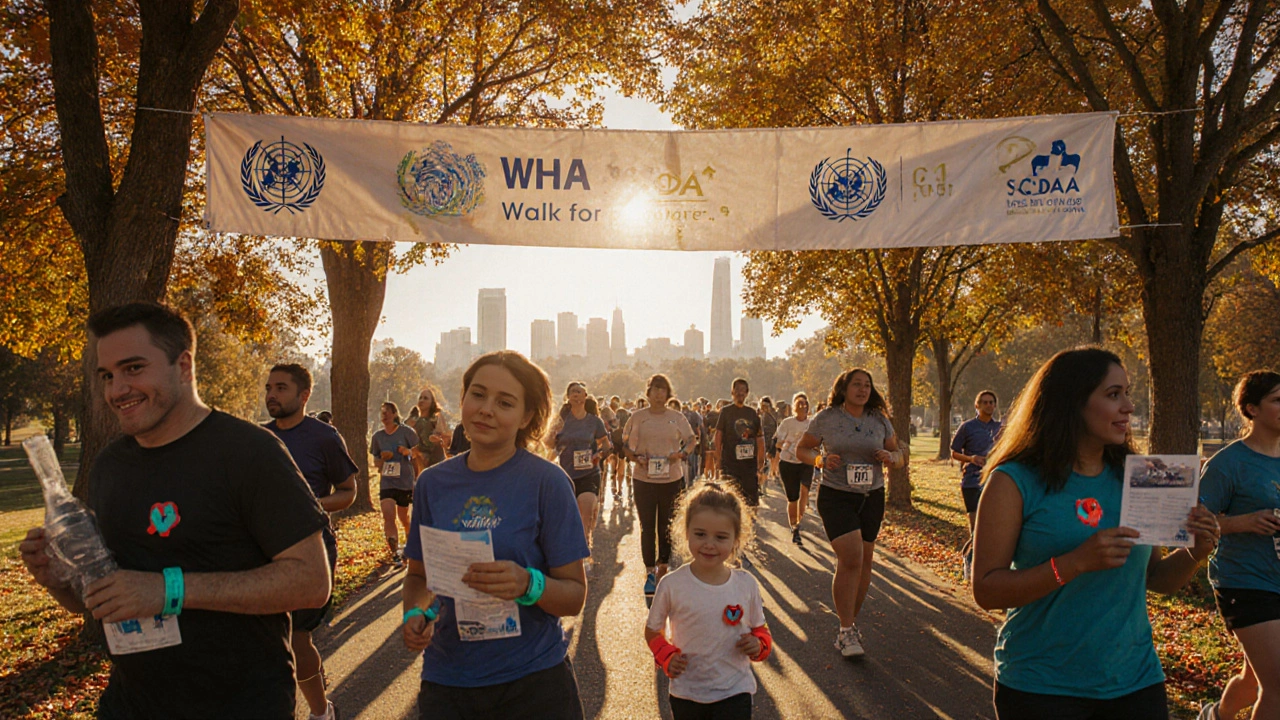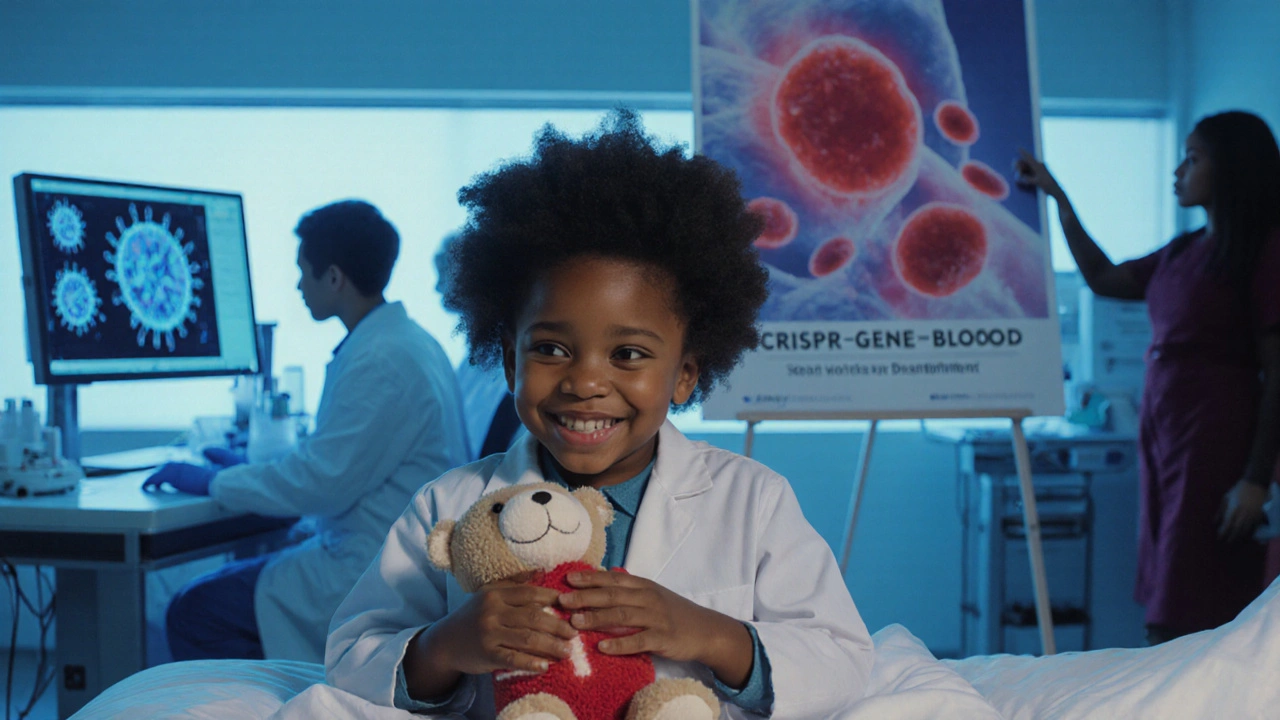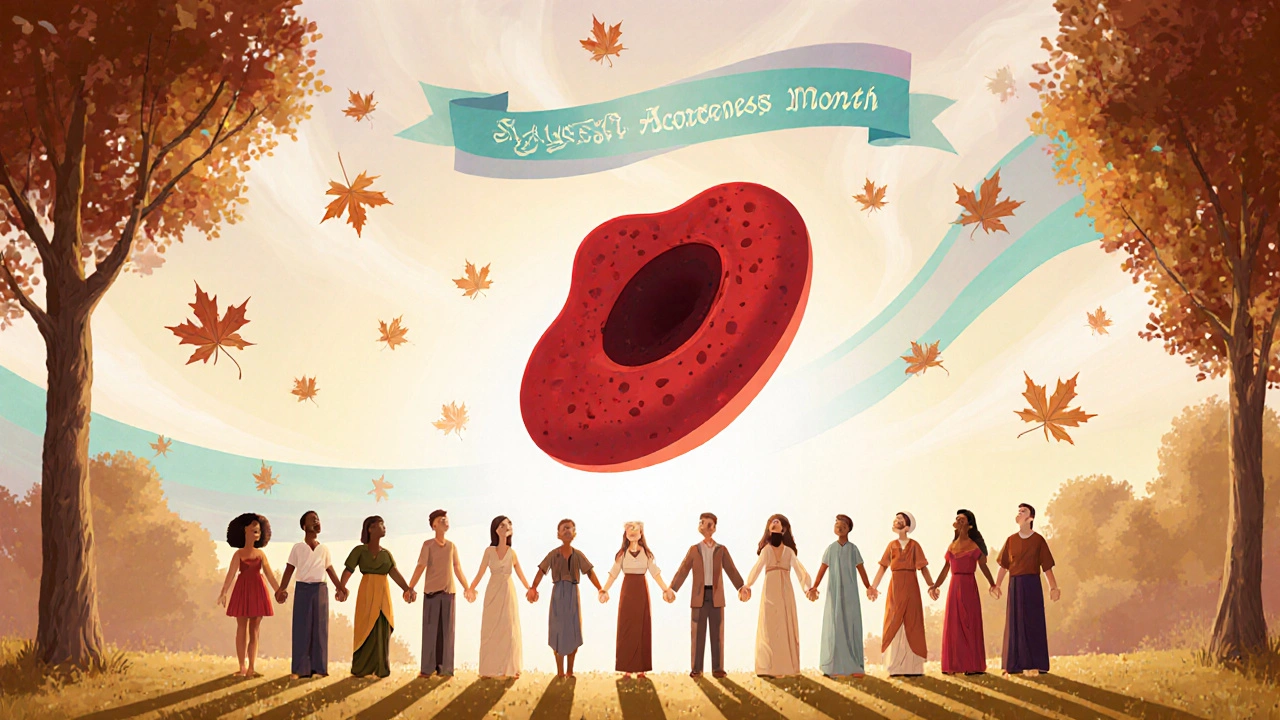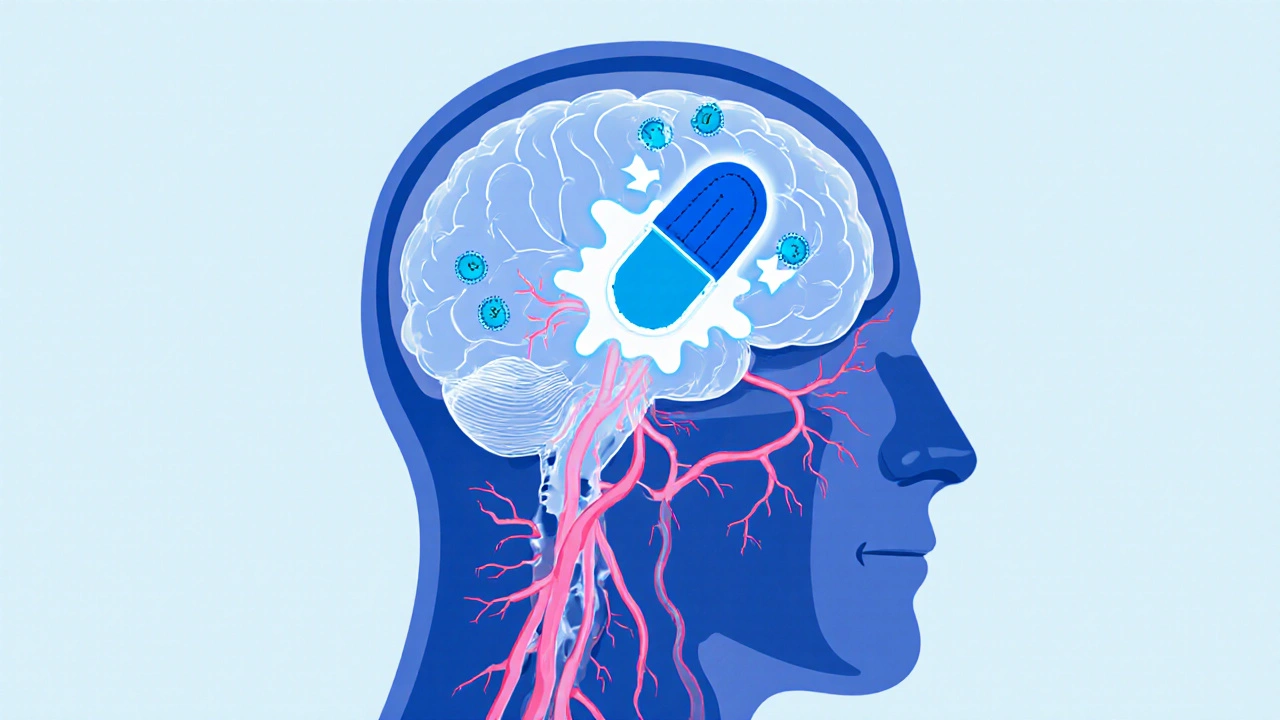Sickle Cell Donation Impact Calculator
How Your Donation Makes a Difference
Every dollar supports critical work in three key areas: clinical trials, community education, and newborn screening infrastructure. See exactly where your contribution goes.
Every September, the world shines a spotlight on a condition that affects millions yet remains misunderstood: Sickle Cell Anemia Awareness Month a global campaign that educates, supports research, and rallies communities to fight sickle cell disease. If you’re wondering why this month matters and how you can turn empathy into action, read on. You’ll walk away with concrete ideas, trusted resources, and a clear path to making a difference.
Why September Matters
Sickle cell anemia, the most severe form of Sickle Cell Disease a genetic blood disorder that causes red cells to assume a sickle shape, leading to painful crises and organ damage, was first described in the early 20th century. The disease disproportionately impacts people of African, Mediterranean, Middle Eastern, and South Asian descent. In the United States alone, about 100,000 individuals live with the condition, according to the National Heart, Lung, and Blood Institute (NHLBI) a division of the National Institutes of Health that funds sickle cell research and public‑health initiatives. September was chosen as Awareness Month because it aligns with the historic launch of the first nationwide newborn‑screening programs in the 1970s, a milestone that saved countless lives.
Key Milestones and Global Backing
The World Health Organization (WHO) the United Nations agency that sets international health standards and policies listed sickle cell disease as a priority public‑health issue in 2020, urging member states to integrate screening, counseling, and treatment into primary care. Meanwhile, the Sickle Cell Disease Association of America (SCDAA) the largest U.S. advocacy organization for patients, families, and clinicians coordinates the month’s flagship events, from community walks to virtual webinars. Understanding these institutional pillars helps you see where your effort can plug into a larger, coordinated push.

How to Get Involved: A Practical Checklist
- Attend or host a local walk/run. City parks, schools, and community centers often organize a 5‑k‑mile “Walk for Hope”. Even a small neighborhood stroll can raise funds for research.
- Volunteer with blood‑donation drives. Because sickle cell patients often need regular transfusions, the Red Cross an international humanitarian organization that collects and distributes blood products relies on donors of all blood types, especially O‑negative. \n
- Donate to research foundations. Contributions earmarked for Hydroxyurea an FDA‑approved drug that reduces pain episodes and hospitalizations or emerging Gene Therapy a cutting‑edge approach that aims to correct the sickle mutation at its source can accelerate cures.
- Share accurate info on social media. Tag official accounts like @SCDAA or @WHOHealth, use hashtags #SickleCellAwareness, #SCA2025, and debunk myths (e.g., “Sickle cell is contagious”).
- Join or start a support group. Peer‑to‑peer networks provide emotional relief and help families navigate newborn‑screening follow‑ups.
Understanding Impact: What Your Effort Funds
Every dollar channeled to research goes toward one of three critical pathways:
- Clinical trials. Presently, over 30 trials are testing CRISPR‑based gene‑editing tools, with early results showing up to 80% reduction in sickling events.
- Community education. Workshops that teach families how to recognize early signs of a vaso‑occlusive crisis can cut emergency‑room visits by 15%.
- Infrastructure. Expanding newborn‑screening labs in low‑resource regions brings early diagnosis to countries where up to 70% of affected infants die before age five.
Seeing the numbers helps translate abstract goodwill into measurable health gains.
Resources You Can Trust
When you want to learn more or share facts, turn to these vetted sources:
- CDC Sickle Cell Fact Sheet the U.S. Centers for Disease Control and Prevention’s concise guide on prevalence, treatment, and prevention
- UNICEF Global Health Reports annual publications that track progress on newborn‑screening programs in developing nations
- Sickle Cell Foundation (UK) the leading British charity offering patient resources, research grants, and local event calendars

Creating Your Own Awareness Campaign
If you’re the type who likes to lead, here’s a simple roadmap to launch a micro‑campaign:
- Pick a focus-education, fundraising, or blood donation.
- Set a clear goal (e.g., raise $2,000 for gene‑therapy trials).
- Gather visual assets: infographics showing red‑cell sickling, patient stories, and a short video clip from a local clinic.
- Choose platforms: Instagram for younger audiences, Facebook for community groups, LinkedIn for corporate sponsorships.
- Schedule posts daily during September, using a content calendar to keep messaging consistent.
- Measure results-track clicks, donations, and new volunteers to refine future efforts.
Even a handful of posts can spark conversations that ripple through neighborhoods, schools, and workplaces.
Common Pitfalls and How to Avoid Them
Good intentions sometimes clash with misinformation. Here are three mistakes people make and quick fixes:
- Sharing outdated statistics. Always verify dates; the prevalence figure from 2022 has already been revised upward in 2024.
- Assuming all blood types can donate equally. Emphasize the scarcity of O‑negative units and the need for regular platelet donations.
- Over‑promising cure timelines. Be honest-while gene therapy shows promise, it may still be years before widespread availability.
Staying accurate builds trust and ensures lasting impact.
Frequently Asked Questions
When is Sickle Cell Anemia Awareness Month?
The campaign runs every September, with many events kicking off on the first Monday of the month.
Do I need a medical background to volunteer?
No. Most roles-event staffing, social‑media promotion, and community outreach-require only enthusiasm and a willingness to learn.
How does blood donation help sickle cell patients?
Regular transfusions replace sickled cells with healthy ones, preventing strokes and reducing pain crises. Donated blood also supports research labs testing new storage methods.
Can I donate money directly to research?
Yes. Look for designated funds on the websites of the NHLBI, SCDAA, or the Sickle Cell Foundation. Specify whether you want to support clinical trials, education, or infrastructure.
What age groups are most affected?
The disease is present from birth, but severe complications often manifest in early childhood and adolescence. Early screening dramatically improves outcomes.








9 Comments